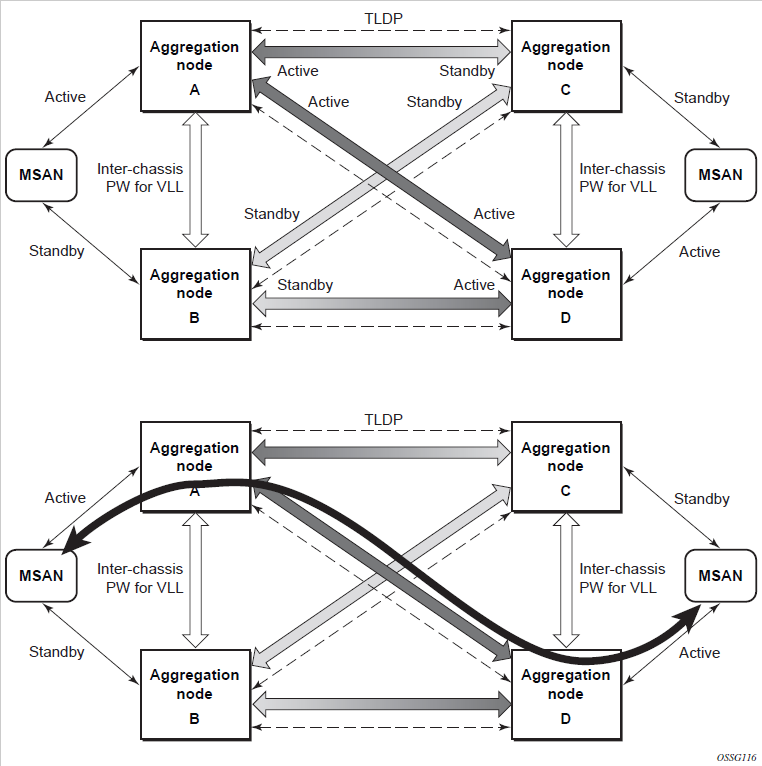The following figure shows the use of both Multi-Chassis Link Aggregation (MC-LAG) in the access network and pseudowire redundancy in the core network to provide a resilient end-to-end VLL service to the customers.

In this application, a new pseudowire status bit of active or standby indicates the status of the SAP in the MC-LAG instance in the 7210 SAS aggregation node. All spoke SDPs are of secondary type and there is no use of a primary pseudowire type for this mode of operation. Node A is in the active state according to its local MC-LAG instance and therefore advertises active status notification messages to both its peer pseudowire nodes, for example, nodes C and D. Node D performs the same operation. Node B is in the standby state according to the status of the SAP in its local MC-LAG instance and therefore advertises standby status notification messages to both nodes C and D. Node C performs the same operation.
7210 SAS node selects a pseudowire as the active path for forwarding packets when both the local pseudowire status and the received remote pseudowire status indicate active status. However, a 7210 SAS device in standby status according to the SAP in its local MC-LAG instance is capable of processing packets for a VLL service received over any of the pseudowires which are up. This is to avoid black holing of user traffic during transitions. The 7210 SAS standby node forwards these packets to the active node bye the Inter-Chassis Backup pseudowire (ICB pseudowire) for this VLL service. An ICB is a spoke-SDP used by a MC-LAG node to backup a MC-LAG SAP during transitions. The same ICB can also be used by the peer MC-LAG node to protect against network failures causing the active pseudowire to go down.
Note that at configuration time, the user specifies a precedence parameter for each of the pseudowires which are part of the redundancy set as described in the application. A 7210 SAS node uses this to select which pseudowire to forward packet to in case both pseudowires show active/active for the local/remote status during transitions.
Only VLL service of type Epipe is supported in this application. Also, ICB spoke-SDP can only be added to the SAP side of the VLL cross-connect if the SAP is configured on a MC-LAG instance.